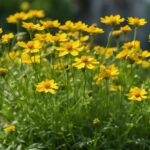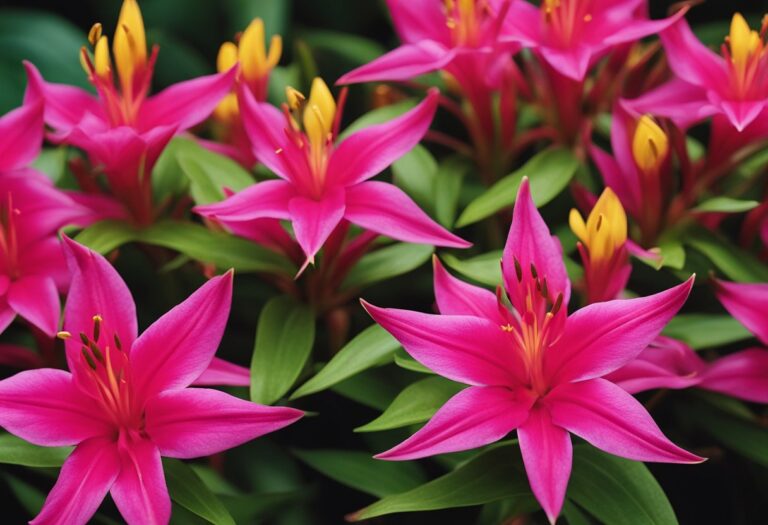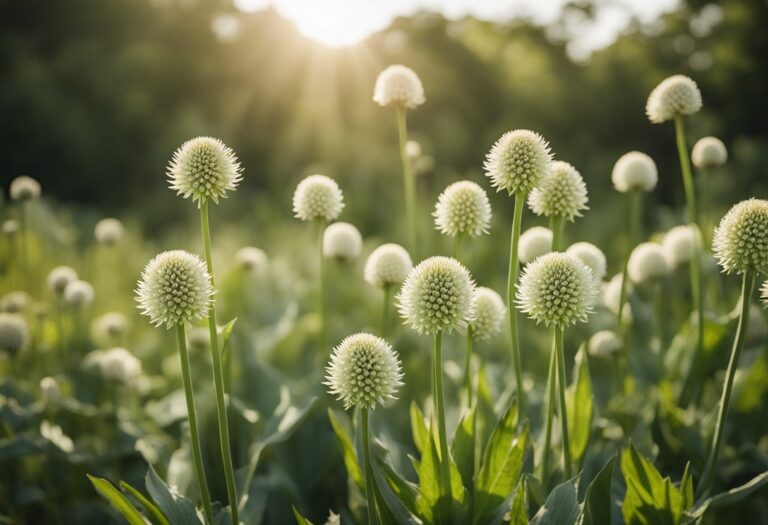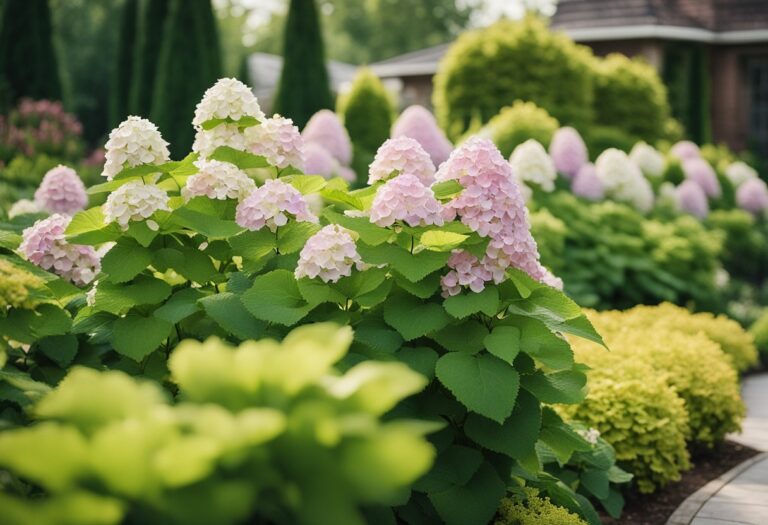Identification and Description
Your identification of the Himalayan Cobra Lily (Arisaema consanguineum) begins with its distinct foliage and flower structure.
This perennial plant is recognized for its large, umbrella-like leaf. Each leaf comprises 11-20 narrow, glossy leaflets radiating from a central point, resembling a more diminutive palm tree leaf.
This plant features a singular, sturdy stem that can grow up to 1 meter (3.3 feet) in height. The stem is a dark, sometimes mottled, tone which supports the foliage and the unique flower.
The flower of the Himalayan Cobra Lily is particularly striking:
- Spathe: A deep maroon or green to purple-brown, this hooded structure is beautifully striped and surrounds the spadix. The spathe shape resembles a cobra’s hood, lending the plant its common name.
- Spadix: The elongated central floral spike, which can be green or purple, carries the actual tiny flowers of the plant.
After flowering, the plant produces orange-red berries, which add to its ornamental value. These berries develop on a spike and signal the plant’s reproductive phase.
Your recognition of this species will be aided by its growth pattern:
- Height: Typically ranging between 3-6 feet (1-2 meters).
- Width: Approximately 12 inches (30 cm).
This plant unfurls its foliage in the spring to early summer, with its intriguing flowers appearing from late spring to midsummer. The brilliant foliage persists throughout the growing season, garnering keen garden interest.
Habitat and Distribution

The Himalayan Cobra Lily, Arisaema consanguineum, thrives in various soil types and conditions across its native and adapted regions, indicating its adaptability to different ecological niches.
Geographical Range
Your exploration of the Himalayan Cobra Lily’s geographical range reveals its origins in the mountainous regions of the Himalayas and Indochina. However, it is not just confined to these areas; it has spread to other parts of Asia, including China, the Philippines, North Thailand, and North Vietnam.
Ecological Requirements
The ecological needs of the Himalayan Cobra Lily are indicative of its resilience. When considering the suitable conditions for its growth, focus on:
- Soil Types: It can grow in clay, loam, or sand, suggesting versatility.
- Clay soil should be well-draining to prevent waterlogging in winter.
- Loam and sand provide different moisture retention levels, yet the plant adapts to both.
- Light: Provides optimal growth in light to dappled shade, which protects it from direct sunlight while still receiving enough light to thrive.
In terms of hardiness, the Himalayan Cobra Lily is found in USDA zones 5 to 9, reflecting its ability to withstand a range of temperatures and climates.
Regular watering promotes health, yet once established, the plant has some degree of drought tolerance. It is also not particularly palatable to deer, adding to its survivability in varied habitats.
Propagation and Cultivation
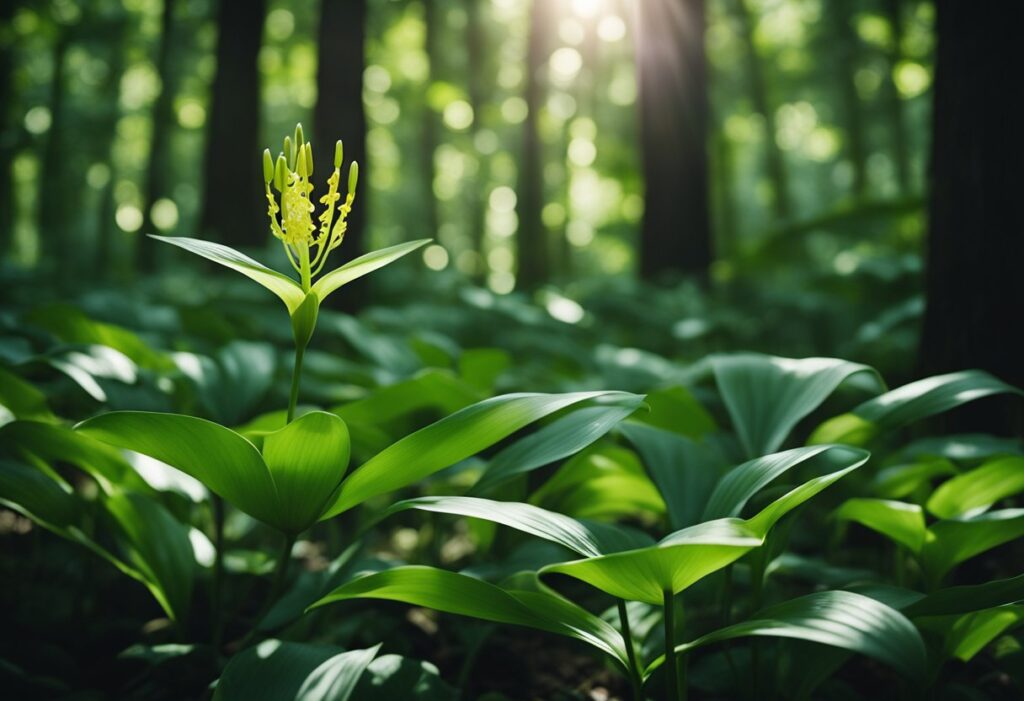
Before propagating or cultivating the Himalayan Cobra Lily, understand that this plant requires specific conditions for successful growth. Proper propagation methods increase the chances of success, while cultivation tips ensure a healthy and attractive plant.
Propagation Methods
Seeds:
- Sow: Sow seeds in containers within a cold frame in autumn.
- Germination: Seed germination can be slow, and it may take up to a year or more for sprouts to appear.
Division:
- Timing: Divide bulb offshoots in the fall.
- Process: Carefully separate the offshoots from the parent plant, ensuring each has roots attached.
Cultivation Tips
Soil:
- Clay, loam, or sand are all acceptable soil types.
- Ensure the soil has good drainage to prevent waterlogging.
Location:
- Choose a location with filtered sunlight or partial shade.
- Protect from strong winds which can damage the tall stems and large leaves.
Watering:
- Keep the soil consistently moist during the growing season.
- Reduce watering in the dormant season to avoid rot.
Conservation and Threats
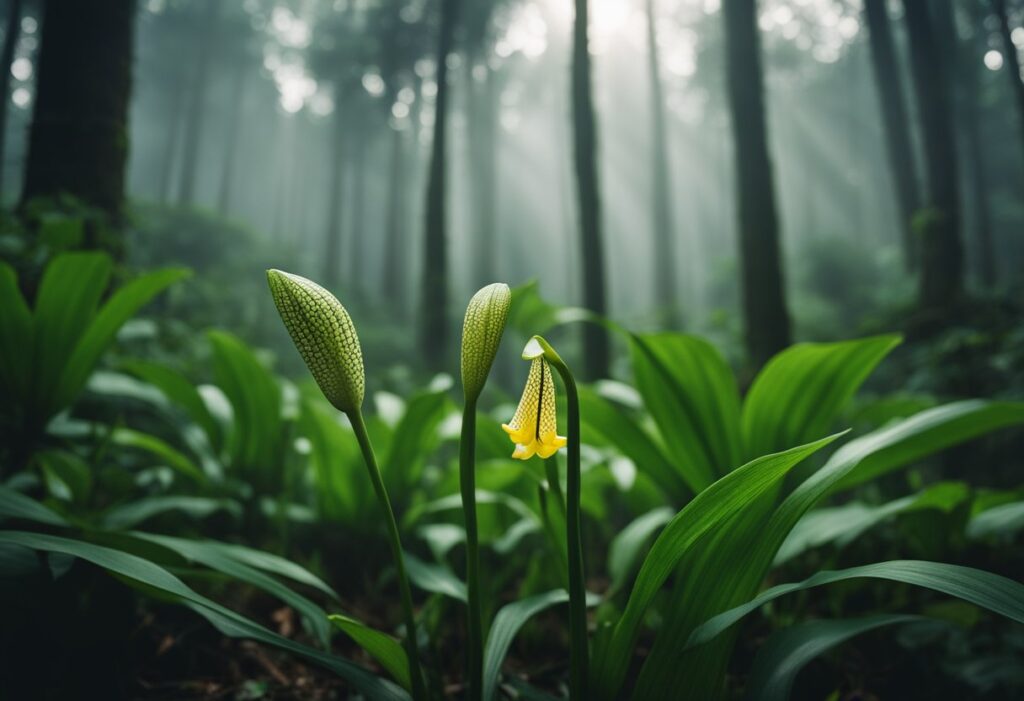
When you consider the conservation status of the Himalayan Cobra Lily (Arisaema consanguineum), it is essential to recognize that its existence is closely tied to the ecosystems of the Himalayas and Indochina.
Fortunately, as of the current knowledge base, this species faces no immediate threats that would categorize it as endangered.
However, your awareness of potential threats is crucial to its continued survival. Habitat loss due to deforestation for agriculture, development, and wood harvesting poses a significant risk. Climate change also represents a looming threat with unpredictable impacts on the species’ mountainous habitat.
You can find the Himalayan Cobra Lily across various terrains. Here is a brief overview of its adaptability in different soil types:
- Clay: High water retention, heavy, potential waterlogging in winter.
- Loam: Typically ideal, well-drained, fertile.
- Sand: Low water retention, may require more frequent watering.
It is your responsibility to protect the varied habitats that sustain this plant. Conservation efforts include responsible cultivation, habitat preservation, and supporting local and global conservation policies.
Note that over-collection of wild specimens for horticultural purposes can lead to population decline; therefore, cultivating from responsibly sourced seeds or plants is imperative.
Medicinal and Traditional Uses
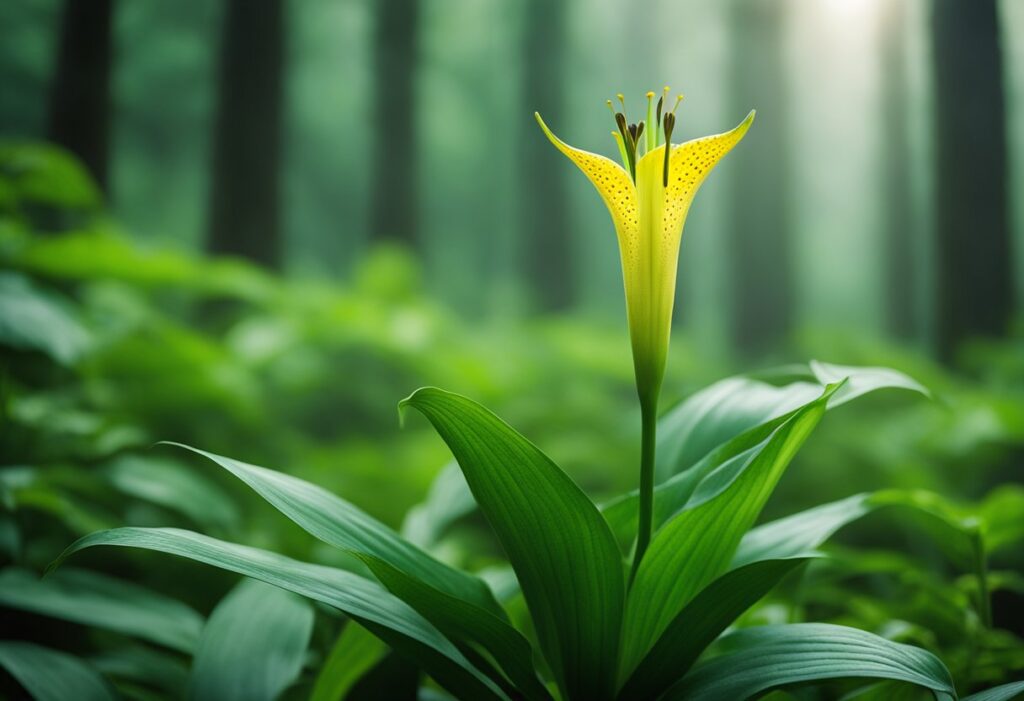
The Himalayan Cobra Lily, Arisaema consanguineum, is significant in traditional medicine. Recognizing its historical and cultural context can enrich your understanding of its applications.
Indigenous Practices:
- Medicinal Uses: Traditionally, various communities have used parts of Arisaema consanguineum for therapeutic purposes.
- Roots and Tubers: These are commonly employed in treatments for maladies such as snake bites and other venomous wounds, which you might find intriguing given the plant’s snake-like appearance.
Applications in Chinese Medicine:
- The plant has been used in traditional Chinese medicine for its health benefits.
- Swelling and Pain: It has been applied to reduce swelling and alleviate pain.
- Blood Circulation: Additionally, it’s believed to improve blood flow.
Preparation Methods:
- The tubers and roots are prepared in specific ways to maximize their remedial properties.
- They may be dried, powdered, or used in concoctions.
Safety Considerations:
- Toxicity: Exercise caution, as parts of the plant contain substances that can be toxic if not prepared correctly.
- Usage: Always seek guidance from a qualified herbalist or healthcare provider before using for medicinal purposes.
Frequently Asked Questions
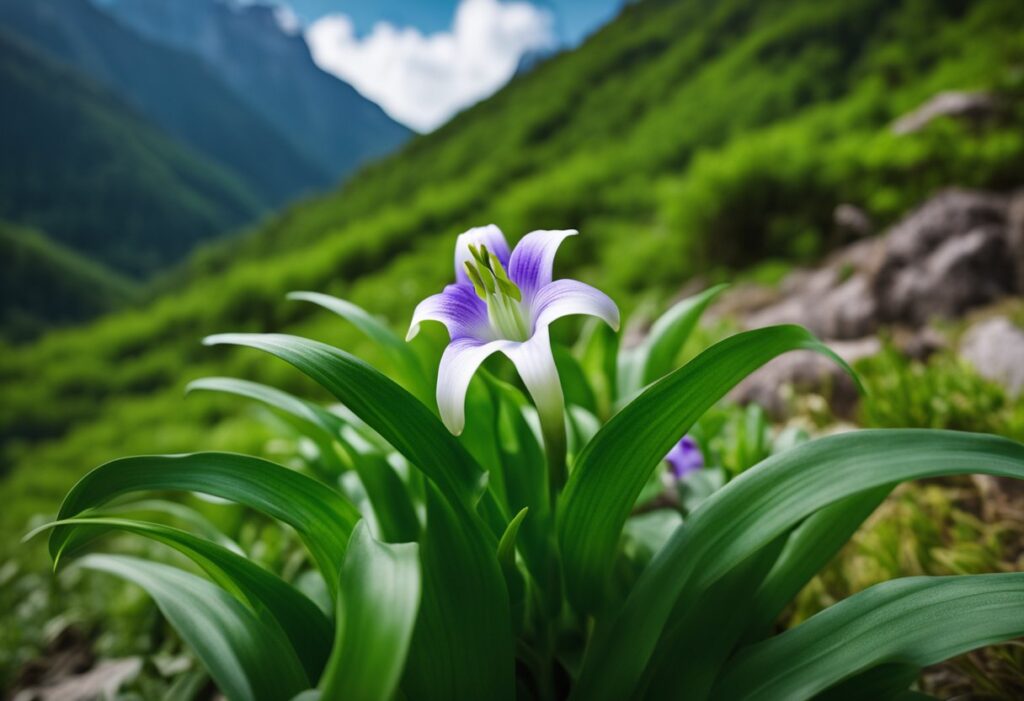
In this section, you’ll find clear and precise answers to common questions about the Arisaema consanguineum, the Himalayan Cobra Lily.
What are the ideal growing conditions for Arisaema consanguineum?
To ensure healthy growth, plant your Himalayan Cobra Lily in well-draining soil—clay, loam, or sand—that remains moist but not waterlogged. This species thrives in partial to full shade and benefits from a cool woodland garden environment.
How does one propagate the Himalayan Cobra Lily?
Propagation of the Himalayan Cobra Lily is typically achieved by seeds or by dividing the tubers. Sow the seeds fresh for best germination, or carefully separate the tubers during dormancy and replant them.
What are the common uses of Arisaema consanguineum in traditional medicine?
Traditionally, Arisaema consanguineum has been used in various medicinal preparations. Different parts of the plant may be used to treat ailments such as fevers and inflammation; however, seek advice from a healthcare provider before using it medicinally.
Is there any toxicity concern when handling Arisaema consanguineum?
Exercise caution when handling the Himalayan Cobra Lily, as it contains calcium oxalate crystals, which can irritate the skin and mucous membranes. It’s advisable to wear gloves during handling and keep the plant out of reach of children and pets.
What size does the Himalayan Cobra Lily reach at maturity?
At maturity, the Himalayan Cobra Lily typically reaches 3-6 feet (1-2 meters) with a spread of about 12 inches (30 cm). These dimensions contribute to the plant’s striking presence in a garden setting.
Can the Himalayan Cobra Lily withstand cold weather conditions?
This resilient species can survive in USDA hardiness zones 5-9. The Himalayan Cobra Lily has adapted to withstand cold weather. However, it’s best to provide some mulch during the coldest months. This will protect the tubers from freezing.


